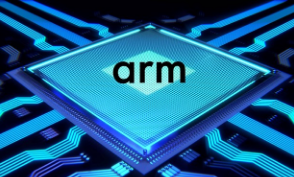ARM Offloads Chinese Joint Venture Stake
Drops its involvement in Arm mini China for $775.2 million after the European Union prepare legal proceedings

SoftBank Group, owner of microprocessor IP firm Arm, announced this week that the British firm will sell its majority 51% stake to Chinese investors and ecosystem partners for $775.2 million to form a joint venture for Arm’s business in China. Under the agreement, Arm will still receive a significant proportion of all license, royalty, software, and service revenues arising from Arm China.
Arm had already transferred its IP to the joint venture last month, enabling its Chinese operation to enable local chip developers license technology directly in China. This has raised alarm bells within the European Union, with the EU Commissioner for Trade, Cecilia Malmström, launching legal proceedings last week in the World Trade Organization (WTO) against Chinese legislation that undermines the intellectual property rights of European companies.
Whether Arm’s hand was forced or not, the company’s rationale for the latest transaction was outlined in SoftBank’s press statement, saying that around 95% of all advanced chips designed in China in 2017 were based on Arm technology, with 20% of the company’s global revenues coming from China in the fiscal year ended March 2018. The statement adds, “The Chinese market is valuable and distinctive from the rest of the world. Arm believes this joint venture, which will license Arm semiconductor technology to Chinese companies and locally develop Arm technology in China, will expand Arm’s opportunities in the Chinese market.”
Arm would not comment on the statement, but what the transaction means is that Arm China revenue will no longer be reported under SoftBank’s consolidated accounts once the transaction completes, which it is expected to do this month.
The European Union’s Cecilia Malmström said in its case filed on June 1, “Technological innovation and know-how is the bedrock of our knowledge-based economy. It’s what keeps our companies competitive in the global market and supports hundreds of thousands of jobs across Europe. We cannot let any country force our companies to surrender this hard-earned knowledge at its border. This is against international rules that we have all agreed upon in the WTO. If the main players don’t stick to the rulebook, the whole system might collapse.”
The EU statement adds that European companies going to China are forced to grant ownership or usage rights of their technology to domestic Chinese entities and are deprived of the ability to freely negotiate market-based terms in technology transfer agreements. This is at odds with the basic rights that companies should be enjoying under the WTO rules and disciplines, particularly under the Agreement on Trade-Related Aspects of Intellectual Property Rights (TRIPS Agreement).
The case initiated by the EU targets specific provisions under the Chinese regulation on import and export of technologies (known as “TIER”) and the regulation on Chinese-foreign equity joint ventures (known as “JV Regulation”) that discriminate against non-Chinese companies and treat them worse than domestic ones. These provisions violate WTO obligations to treat foreign companies on an equal footing with domestic ones and to protect intellectual property like patents and undisclosed business information.
The EU says that if the consultations requested do not reach a satisfactory solution within 60 days, the EU will be able to request that WTO sets up a panel to rule on the matter. While the EU’s request is similar to the one brought recently to the WTO by the U.S., it also identifies further potential violations of WTO rules.
The U.K.’s Financial Times reports Rene Haas, Arm’s president of its IP group, suggesting that it’s still business as usual, saying, “The partners in China are still using the very same technology they were using prior to the JV being established. If you are a local partner, the biggest change is that you are now operating on a PRC contract as opposed to a U.K. contract.”
在线留言询价

Arm Grabs Stream for IoT Services

Arm Targets Laptop Performance

ARM Under Attack in AI
- 一周热料
- 紧缺物料秒杀
| 型号 | 品牌 | 询价 |
|---|---|---|
| CDZVT2R20B | ROHM Semiconductor | |
| MC33074DR2G | onsemi | |
| RB751G-40T2R | ROHM Semiconductor | |
| BD71847AMWV-E2 | ROHM Semiconductor | |
| TL431ACLPR | Texas Instruments |
| 型号 | 品牌 | 抢购 |
|---|---|---|
| TPS63050YFFR | Texas Instruments | |
| ESR03EZPJ151 | ROHM Semiconductor | |
| BP3621 | ROHM Semiconductor | |
| BU33JA2MNVX-CTL | ROHM Semiconductor | |
| IPZ40N04S5L4R8ATMA1 | Infineon Technologies | |
| STM32F429IGT6 | STMicroelectronics |
- 周排行榜
- 月排行榜
AMEYA360公众号二维码
识别二维码,即可关注


请输入下方图片中的验证码:























